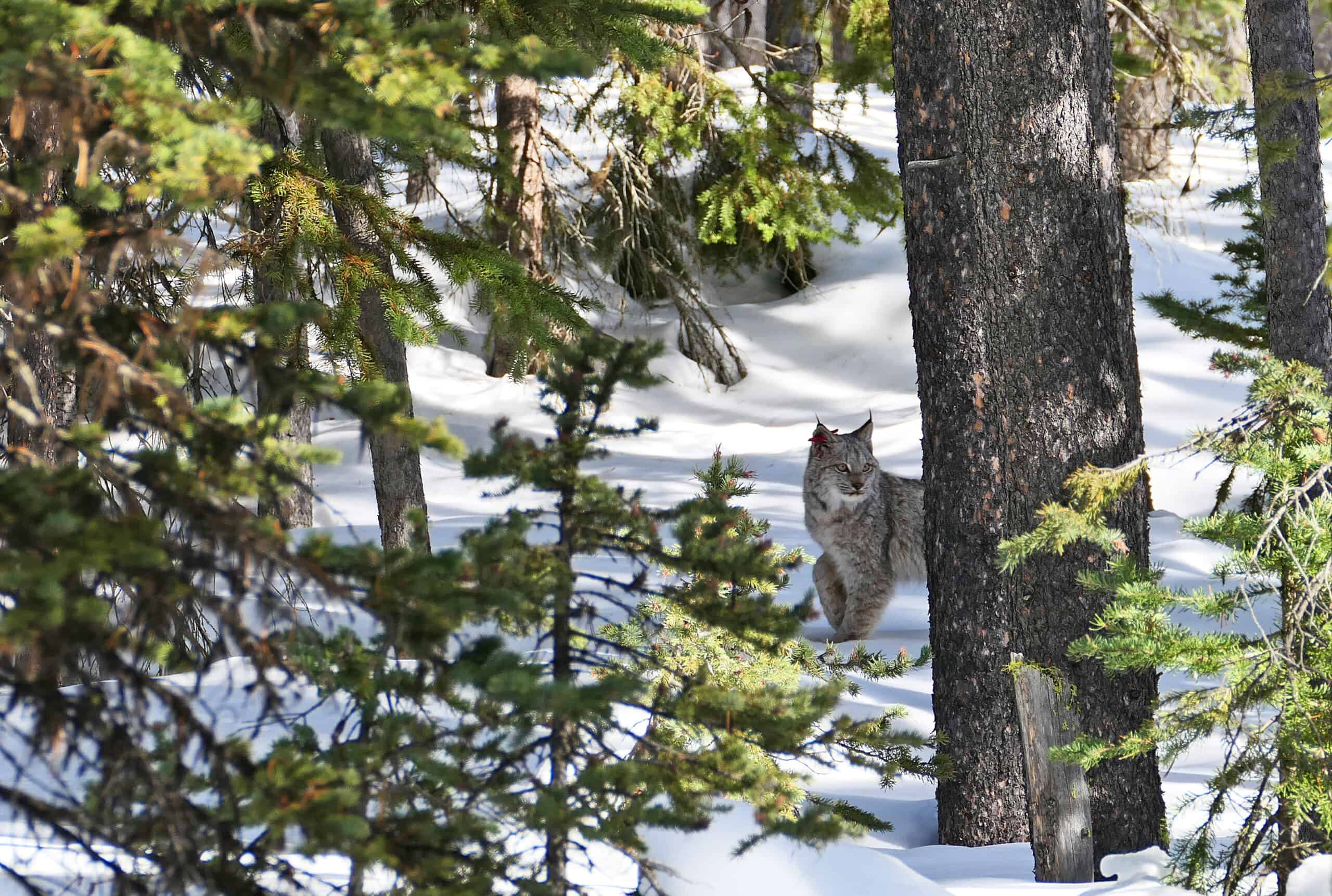Share this article
Wildlife Featured in this article
- Canada lynx
JWM: Large, intense burns may limit habitat for Washington lynx
Climate change and past fire suppression had led to damaging wildfires
Intense fires that burn massive swaths of forest may be limiting the amount of core foraging habitat available for a declining population of Canada lynx in Washington state.
Researchers began examining the state of lynx (Lynx canadensis) in the Okanogan Lynx Management Zone, an area centering around the Okanogan-Wenatchee National Forest in north central Washington along the border with British Columbia. For the study, published recently in the Journal of Wildlife Management, they modeled habitat available in the area in different periods.
The models revealed that the fires reduced forest habitat by 17% from 2000 to 2013, and then by 15% from 2013 to 2020. These burns probably reduced lynx carrying capacity by 66-73% since 2000, researchers found.
“It gave us a pretty stark picture of how much habitat has been lost to wildfire in that period,” said TWS member Andrea Lyons, a partner at the Washington Conservation Science Institute—a private ecology consulting firm—and the paper’s lead author.
The intense fires that have burned huge areas in recent years are the result of both a century of fire suppression and of climate change, which has brought warmer, drier conditions to the region. In some cases, these fires burn so hot that the soil is too scorched to allow the forests to regrow.
More research is needed to understand how much lynx use burn areas as vegetation covers, Lyons said, but past research has shown that lynx will use smaller patches of habitat within burned forest, like those that occurred naturally in the past.
“We are setting ourselves up for failure if we don’t do something different about vegetation and fire management.”
Andrea Lyons
Other researchers have found lynx evidence in areas that have recently experienced large fires, she said. That suggests that lynx may be able to use areas beyond the dense forests they’re often associated with. Research presented at The Wildlife Society’s 2022 Annual Conference in Spokane found that lynx can tolerate beetle-killed forests, since snowshoe hares—their primary prey—seem to thrive in them.
“Our assumption that they need dense forest is based on the fact that we suppressed fire for so long,” Lyons said.
Managing for a more natural fire regime is probably critical to conserve lynx, which are considered threatened under the Endangered Species Act, as well as a host of other species, she said. But it’s likely that the huge, extra-hot fires occurring these days aren’t good for denser populations of lynx.
“We are setting ourselves up for failure if we don’t do something different about vegetation and fire management,” Lyons said. “There’s just not as much habitat to support as many lynx as there was, so the carrying capacity is going down significantly as well.”
This article features research that was published in a TWS peer-reviewed journal. Individual online access to all TWS journal articles is a benefit of membership. Join TWS now to read the latest in wildlife research.
Header Image: A lynx with an ear tag walks among a dense stand of trees. Researchers found lynx habitat in Washington is declining due to destructive wildfires. Credit: Scott Fitkin/WDFW








